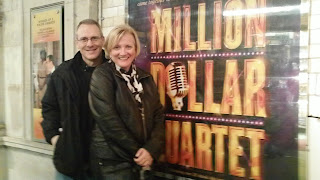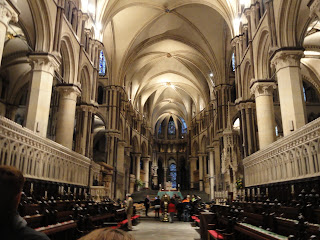There's been a lot going on, but I wanted to get a note out about this while it was fresh in my mind. We're heading off to Stonehenge tomorrow so we'll want to write up other things over the weekend. Tonight we went with Donald Rumbalow on a tour of the area where Jack the Ripper worked.
Donald is one of our "British Life and Culture" teachers. He's also a former police officer with the London Police and one of the foremost experts on Jack the Ripper in the world. That made the tour pretty cool. You can check out his book at this link:
Don's book Learned all kinds of interesting things tonight. This is Donald talking to the students.
Since Jack "only" killed five women, I've always wondered why it was such a big deal in London of the late 1800s. After all, Sherlock Holmes was having to solve murders all the time, right? Actually, the murder rate at the time was amazingly low (about 200 a year in the whole country). That had to make a series of five killings (plus two more than happened just before he got started) pretty sensational. Since they were spread over several months, the fear in East London must have been horrible.
In the movies, there's always a Scotland Yard detective looking for the killer. In truth, the City of London and the outer city (served by Scotland Yard) had separate and competing forces at the time. There was no cooperation and a lot of rivalry. That was part of the complication of the search--the killings happened in both jurisdictions. The head of the Metro Police even willfully destroyed evidence at one point in the investigation.
The other thing that I didn't realize is how often he was seen, at a distance, with his victims--usually seen just minutes before he killed them. I'll spare you any details of the killings. They were pretty gruesome.
All of the victims were prostitutes who worked in the East End area. They all frequented the pub in the picture below. It's quite likely that Jack did as well.
 Moving west from Stonehenge, we came to a small little English village called Avebury. It is a beautiful little town in its own right. It just has the feel of an English village. Most of the roads are blocked from traffic; walking down small lanes is called for; rock walls create separation in town. It's really very pretty.
Moving west from Stonehenge, we came to a small little English village called Avebury. It is a beautiful little town in its own right. It just has the feel of an English village. Most of the roads are blocked from traffic; walking down small lanes is called for; rock walls create separation in town. It's really very pretty.  What's amazing though is that this little town is also the site of one of the oldest rock circles in the world--dating about 500 years before Stonehenge. And the neat thing about it is that you can walk close to the stones, climb on them and get just a bit of a feel for what it would have been like almost 5000 years ago. It's really not possible to get a good grasp of the circle just walking through. For that, you have to see it by air. See the pics at this link: Avebury Ring That's the full circle. The town is actually built inside the circle. Scholars believe that this may have once been the most important religious site in Britain, or possibly even in Europe.
What's amazing though is that this little town is also the site of one of the oldest rock circles in the world--dating about 500 years before Stonehenge. And the neat thing about it is that you can walk close to the stones, climb on them and get just a bit of a feel for what it would have been like almost 5000 years ago. It's really not possible to get a good grasp of the circle just walking through. For that, you have to see it by air. See the pics at this link: Avebury Ring That's the full circle. The town is actually built inside the circle. Scholars believe that this may have once been the most important religious site in Britain, or possibly even in Europe.

















































